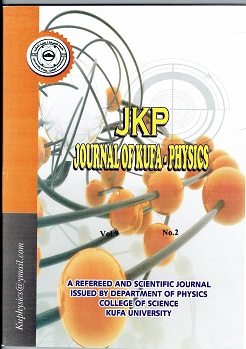Nanomaterials Function in Additive Manufacturing
DOI:
https://doi.org/10.31257/2018/JKP/2023/v15.i02.13538Keywords:
Nanomaterials, Growth mechanisms, photoconductivity, Additive Manufacturing, nanotechnologyAbstract
Nanomaterials are substances that have at least one dimension that falls within the three-dimensional nanoscale range or fundamental structural components made of substances that fall inside this range. Micro-nano 3D printing technology can realize the processing of 3D micro-nano structures with nanometer precision and has broad application prospects in many fields. Metals and polymers can be easily connected through bonding reactions to obtain metal-metal or covalent bonds in 3D printing. These potent chemical bonds make 3D-printed structures stable, and 3D printing of metals and plastics is developing rapidly. The review focuses on the latest developments in unique composite nanomaterials for different field applications, comprising nanomaterials and 3D printing technology. A summary of the mechanisms, functional characteristics, benefits, drawbacks, and applications of various nanomaterials used in scientific 3D printing includes metal-based nanomaterials, metal-organic frameworks, upconversion nanoparticles, and lipid-based nanoparticles. Finally, this study presents an overview and highlights the issues that need to be resolved for nanomaterials to continue to be developed for the advantages of 3D printing.
Downloads
Downloads
Published
How to Cite
Issue
Section
Categories
License
Copyright (c) 2023 Khan Rajib Hossain, Md. Abu Shyeed, Md Al Amin, Md. Samrat Hossain, Md. Saidur Rahman, Md. Habibur Rahman, Channa Nasreen

This work is licensed under a Creative Commons Attribution 4.0 International License.
Journal of Kufa-Physics is licensed under the Creative Commons Attribution 4.0 International License, which allows users to copy, to create extracts, abstracts, and new works from the Article, to alter and revise the Article, and to make commercial use of the Article (including reuse and/or resale of the Article by commercial entities), provided the user gives appropriate credit (with a link to the formal publication through the relevant DOI), provides a link to the license, indicates if changes were made and the licensor is not represented as endorsing the use made of the work. The authors hold the copyright for their published work on the JKP website, while KJP is responsible for appreciating citation for their work, which is released under CC-BY-4.0 enabling the unrestricted use, distribution, and reproduction of an article in any medium, provided that the original work is properly cited.













